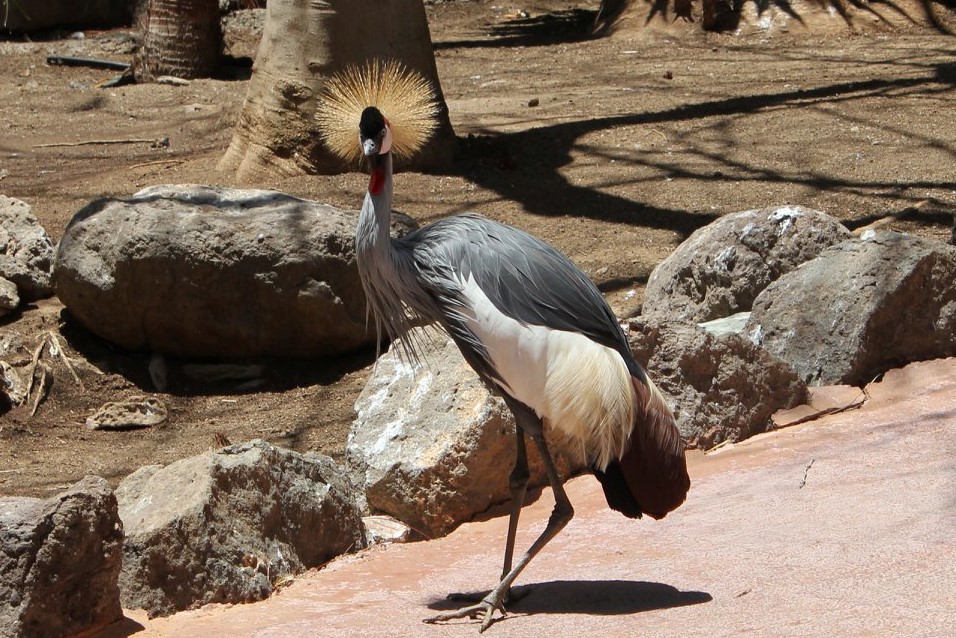GREY CROWNED CRANE
Balearica regulorum

LENGTH

1 m
WEIGHT

10 kg
LIFESPAN

30 years
The grey crowned crane is a type of wading bird that stands out for its size and the colour of its plumage. The name comes from the unique crown on its head.
General characteristics
The grey crowned crane is about 1 meter tall and can weigh between 4-7 kg.
The body plumage is mostly gray except for the wings which are mostly white and are visible during flight and display. It is easily recognized by the cluster of pointed golden plumage on the head.
Their face is white on both sides, but has a bright red air sac on the throat. Both the bill and legs are black. Its legs are slender and elongated.
The male and female are similar, but the male is slightly bigger. Adults can be distinguished from juveniles, being the latter grayer and with long fuzzy hair on the face.
Feeding
Their diet consists mainly of insects, seeds, small vertebrates such as frogs, toads and lizards, and other vegetables.
Behaviour
They are non-migratory and gregarious birds. When the breeding season arrives, they separate from the group in search of a mate that they will keep for the rest of their lives. The males perform the courtship dance for the females, which includes bowing, leaping and a sound that comes from the red sac in their throats.
During the rainy season they live in pairs, while in other seasons they group together in flocks that can number more than a hundred individuals along with other crane species.
Their life is fairly routinary: at dawn they wake up and leave their nests in search of food. After that they head to the sandbanks of rivers to drink and clean their plumage. At dusk, the flocks split into smaller groups to fly back home. They spend the nights perched on tree branches to protect themselves from predators.
Reproduction
The months of reproduction are very variable, depending on where they are located, but generally matches with the local rainy season. They take more or less 1 month to complete the incubation period and for each gestation, they can lay between 2-4 eggs.
They build their nests in marshy areas with reeds and pieces of marsh plants. Sometimes they even place them in the tops of trees.
Threats
Cranes are one of Africa’s most abundant animals, but their population has declined by 15% in the last two decades. They face habitat degradation caused by drainage, lifestock overgrazing and pesticide application.
They are also persecuted by farmers who see them as a threat to cultivation as they often invade crops and feed on young maize stalks.
Distribution
Grey crowned crane live in tropical Africa, south of the Sahara. They can be found in open savannahs foraging for food, but the nest is often in wetter habitats near water, such as riverbanks or swamps.

Did you know?
When the grey crowned crane is excited, it starts to jump and spreads its wings, emitting a high-pitched shrill cry that can be heard from 2 kilometres away.
This is one of the few gruiform birds species that perch in trees.
The song of this bird was used to create the sound and vocalizations of the raptors in the movie Jurassic Park.
Conservation status
